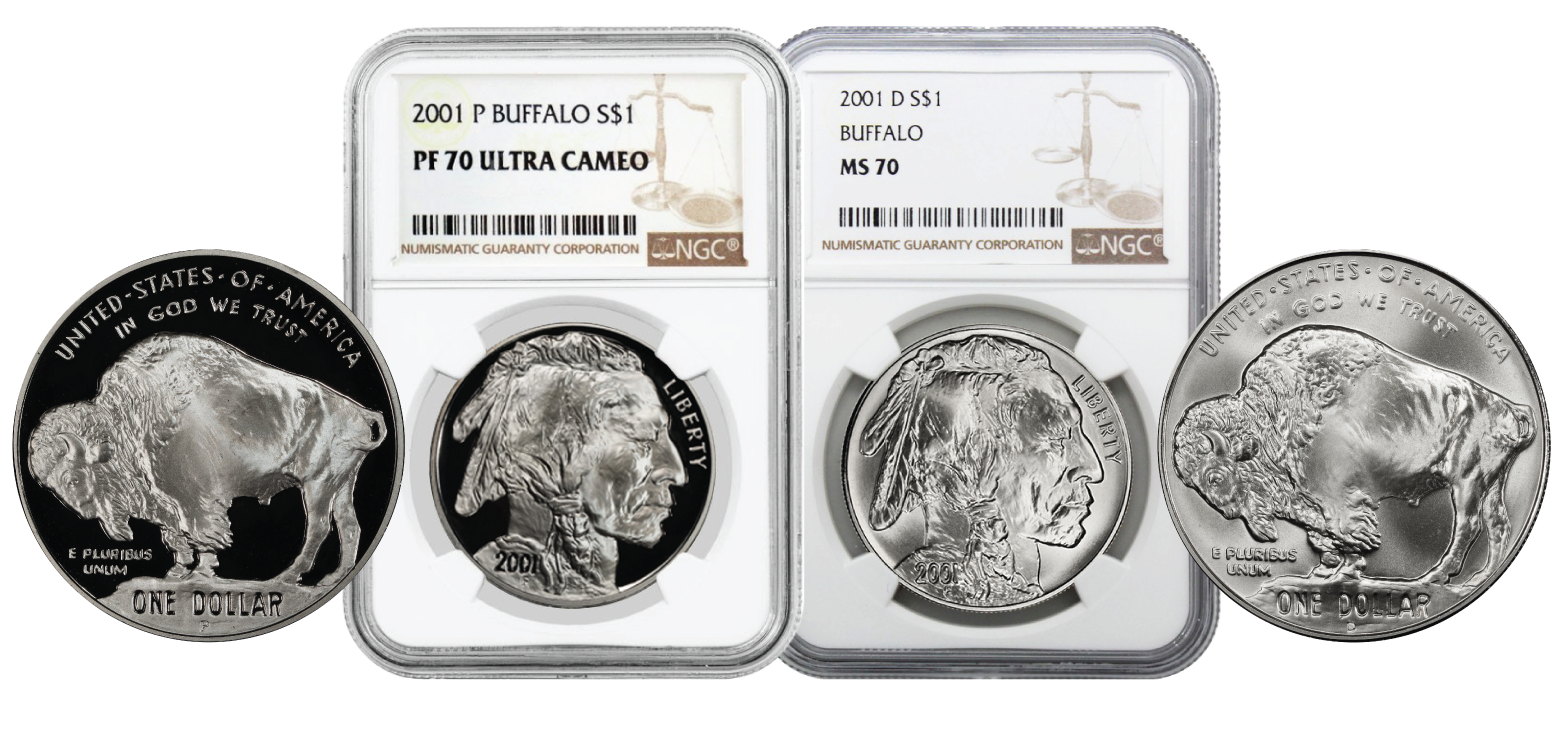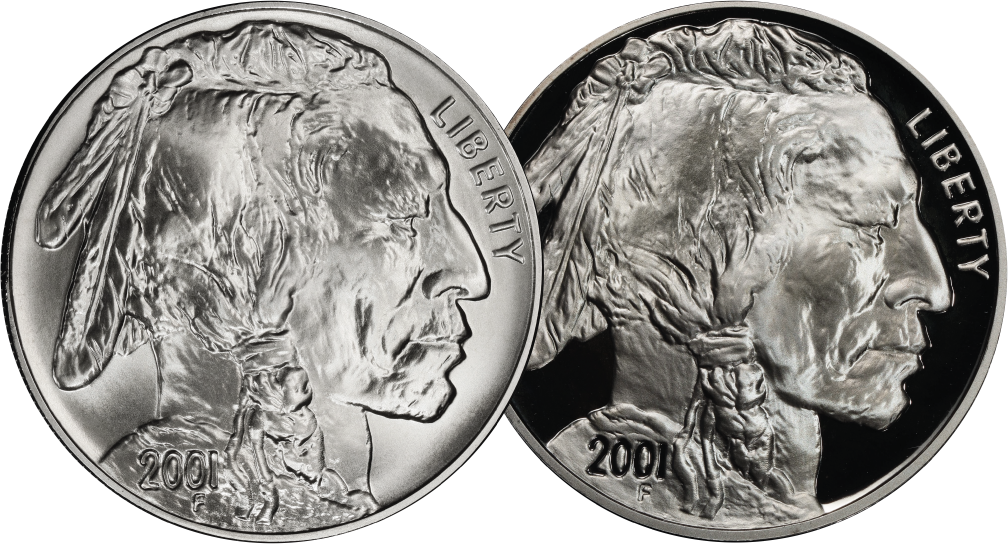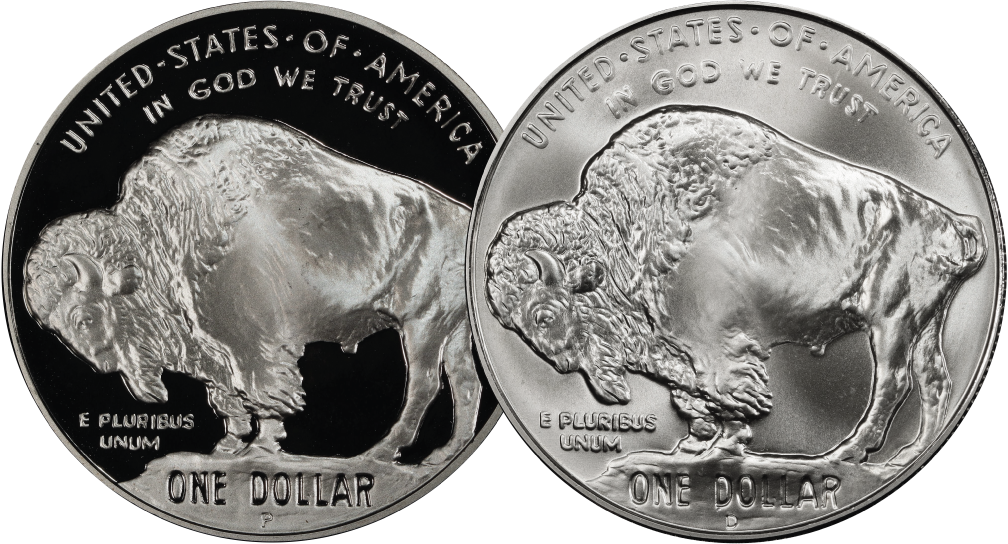2001 Buffalo Silver Dollars
Post by: Walt Durham
in Silver

2001 Buffalo Silver Dollars
Colorado Senator Ben Nighthorse Campbell spearheaded a years-long campaign to bring back the famous Indian Head/Buffalo Nickel. Starting in 1992, Campbell advocated for the reintroduction of the Indian Head/Buffalo Nickel, a coin initially designed by James Earle Fraser and minted for general circulation from 1913 to 1938. His vision was to create a silver edition of the nickel, intended for collectors, with the goal of raising funds for America's National Parks. Unfortunately, the legislation to reintroduce the nickel didn't pass, prompting a revision that transformed the coin into a silver dollar.
Finally, on October 27, 2000, after overcoming various obstacles, the law authorizing the production of the silver dollar was approved. However, the funds generated from the sales were redirected to support the ongoing educational activities of the National Museum of the American Indian in Washington, DC. The law permitted the minting of up to 500,000 pieces, which had become the standard for silver dollar commemoratives. At the time, this limit was considered safe, and little attention was given to the matter.
Nevertheless, subsequent events would cast doubt on this predetermined number. While the law specified that James Earle Fraser's design for the nickel from 1913 would be used for the coin, some modifications were necessary. The denomination was changed to "ONE DOLLAR," and the motto "IN GOD WE TRUST" was added, complying with current legal requirements. The date was also altered to 2001. The revisions were uncredited to any U.S. Mint artist, and only Fraser's initial 'F' appeared on the coin. The models, however, were clearly based on Fraser's design but didn't faithfully replicate it. The coin's relief was shallower than that of the nickel, and, more notably, the bison's legs were shortened to accommodate the additional motto above it. Beyond the inscriptions mandated by law, the coin didn't specifically commemorate anything, except perhaps the enduring popularity of Fraser's Buffalo Nickel design.

The Denver Mint produced uncirculated examples of the American Buffalo Silver Dollars, while the proofs were furnished by Philadelphia. Notably, the mintmarks on these coins were incused rather than raised, a distinctive feature not commonly seen on most United States coins.
Despite its artistic and commemorative limitations, the American Buffalo Silver Dollar became an instant sensation among collectors. Both the proof and uncirculated editions were sold out within two weeks of the opening date, June 7, 2001. The usual ratio between proof and uncirculated sales was disrupted, as collectors scrambled to acquire as many coins as possible, resulting in nearly equal totals for both editions. Adding to the excitement was the Mint's offering of a "Coin and Currency Set," which included the uncirculated Buffalo Dollar, a reproduction of the popular Series 1899 $5 silver certificate, and two U.S. postage stamps, all featuring engraved portraits of Indians.
The immense demand for the silver dollar in 2001 led to discussions about authorizing additional pieces with a distinctive mark to safeguard the value of the original edition. However, Congress ultimately dismissed this idea, displaying a rare moment of prudence.
Collectors should note that both the Proof and Mint State Silver Buffalos grade very poorly and only about 1% of the original mintage have graded flawless MS or PF70. It is not uncommon for us to send in hundreds of coins at a time and receive Zero coins in perfect 70.